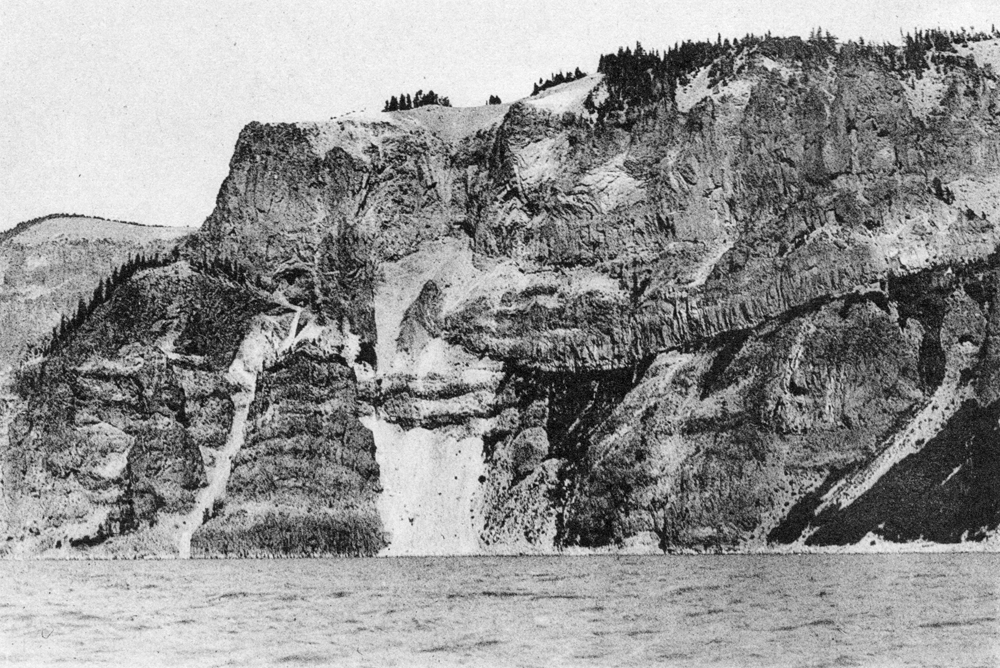The Geology of Crater Lake National Park, OregonWith a reconnaissance of the Cascade Range southward to Mount Shasta by Howell Williams
The Northern Arc of Vents
The Sentinel Rock Flow and Vent
The Watchman and Hillman vents, just described, lie at the western end of the Northern Arc, and were active before the vents of the Llao, Cleetwood, and Redcloud dacite lavas. At the eastern end of the arc, on Sentinel Rock, there is a third andesitic vent which also seems to have become extinct before the dacitic lavas were erupted. If, as appears to be the case, all these vents are related to a common and continuous ring fracture at depth, the fracture spread northward while the magma below differentiated.
|
Plate 30. Fig. 2. Sentinel Rock. Upper part of wall formed by a thick flow of andesite, the vertical feeder of which is visible a little to the left of the center of the picture. Above the flow lie deposits of pumice and till. Beneath the flow lie two series of andesites, the upper resting in a broad valley carved by glaciers in the lower series. The dark streaks of vegetation indicate the seepage line between the two lava series, the water escaping from a thin stratum of glacial debris on the old valley floor. (Photograph by George Grant, National Park Service.) |
Owing to difficulty of access, the feeder of the Sentinel Rock lava was not closely examined, but its form can be readily seen from a distance (plate 30, figure 2). It is exposed on the south face of the rock, in the cliffs overlooking Danger Bay, as a tilted, lava-filled funnel. As compared with the older andesites forming the lower part of the cliffs, the flow from the Sentinel vent is extremely thick. In its central part, close to the source, the thickness varies between 300 and 400 feet. The flow is also distinguished from those below by the great abundance of basic, pseudo-lamprophyric inclusions. Locally these constitute as much as a quarter of the total volume. They indicate extensive crystallization of magma along the conduit walls prior to eruption, and this in turn may account for the explosive opening of the vent, for the vapor tension in a magma so far crystallized is likely to have been great. The initial explosions blasted the funnel-shaped crater and left in its vicinity a layer of coarse, red tuff breccia. When the Sentinel lava rose through the vent and spread over the breccia, its base was chilled to black obsidian. The remainder of the flow, cooling more slowly, developed a holocrystalline, pilotaxitic texture except at the top, where again it was rapidly chilled and therefore contains much glass. How far the flow extended beyond the caldera rim, it is impossible to say, for in that direction it is completely buried by later ejecta.
***previous*** — ***next***


